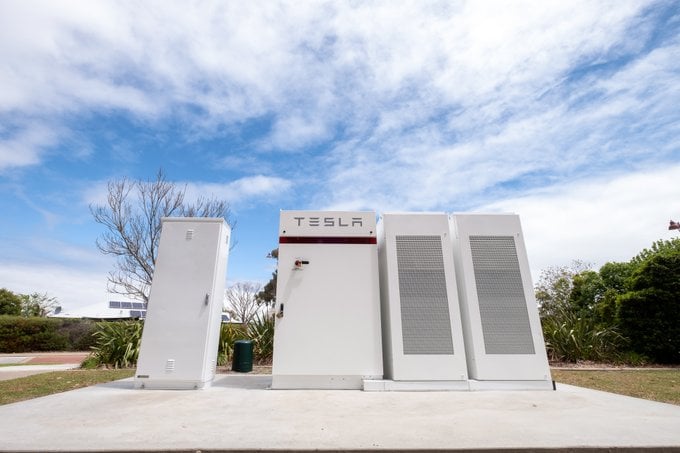
Australia’s federal budget for the next four years includes nearly AU$25 billion (US$16.02 billion) of clean energy commitments and will ease cost of living pressures as well as helping fight climate change.
That was the verdict of the Clean Energy Council national trade association in response to the budget announced yesterday by the Labor Party government of Prime Minister Anthony Albanese.
Enjoy 12 months of exclusive analysis
- Regular insight and analysis of the industry’s biggest developments
- In-depth interviews with the industry’s leading figures
- Annual digital subscription to the PV Tech Power journal
- Discounts on Solar Media’s portfolio of events, in-person and virtual
It features the AU$20 billion Rewiring the Nation transmission upgrade initiative already announced, along with money targeted at regions to deploy renewable and low carbon infrastructure.
The budget also includes hundreds of millions of dollars for community solar batteries, in addition to support for the upstream battery and solar manufacturing value chain.
Meanwhile, funding pledges made under the previous Liberal Party administration for gas and carbon capture and storage (CCS) have been rolled back, with money set aside for those technologies and for a controversial low carbon technology roadmap put instead into other areas.
As reported a few days ago, the Rewiring the Nation public corporation has confirmed its first two low-cost financing commitments, representing around AU$6 billion. They will be for the Marinus Link to connect mainland Australia with Tasmania’s ‘Battery of the Nation’ pumped hydro and wind plan, as well as KerangLink, which will increase interconnection between New South Wales and Victoria.
Powering Australia plan
Under Powering Australia, a major renewable energy plan, the government aims to deliver emissions reductions of 43% from 2005 levels by 2030 and legislate for a firm commitment to net zero by 2050.
That means working to transform areas of the economy from industry and agriculture to transport and of course, electricity and gas.
Several Powering Australia initiatives were included in yesterday’s budget announcements:
AU$224.3 million will be spent on the grants programme Community Batteries for Household Solar. This will deliver 400 community-scale battery systems to benefit up to 100,000 Australian households. Sometimes called ‘neighborhood batteries’, community battery storage means residents can share the value of local rooftop solar energy as well as the batteries themselves.
AU$102.2 million will be spent on Community Solar Banks for 25,000 Australians in apartments, rented accommodation or from low-income households.
AU$63.9 million will be invested in dispatchable energy storage technologies, which could include large-scale battery storage projects. This money, the government pointed out, is being redirected from the Liberal Party-era Underwriting New Generation Investments (UNGI) programme, which to date has not resulted in any new facilities being deployed.
There will also be AU$83.8 million to develop community microgrid projects for First Nations peoples, as well as AU$62.6 million in small and medium-sized business energy efficiency grants.
State-level collaboration across country
In addition to various targeted funding measures, a new National Energy Transformation Partnership will bring energy ministers and stakeholders from each of Australia’s states and territories together.
The government said this will usher in a new age of policy certainty, which will enable investment into transmission and renewable energy projects. For example, market reforms could be made at a high level that support grid-scale storage, energy efficiency and transmission investments.
The federal budget’s details can be seen here.
Reaction: Path set for fossil fuel decoupling, groups advocate for storage target
“Tonight’s announcements reveal a breadth and depth of commitment not seen before when it comes to successfully managing a fast and fair transition to renewable energy,” Clean Energy Council chief executive Kane Thornton said.
Low-cost renewable power and energy storage will “ultimately ease cost-of-living pressures,” Thornton said, adding that this is the kind of budget and policy direction the clean energy industry has been pushing for, for a long time.
Acknowledging that Australia’s energy cost situation means unavoidable short-term pain due to its continued reliance on “unreliable coal and expensive gas,” Thornton said the government has now set a path the decouple from that reliance.
That said, another of the country’s industry organisations, the Smart Energy Council, used the occasion to advocate for a national target for energy storage.
The council, together with the Clean Energy Investor group of developers and investors, and advocacy group Climate Action Network Australia urged for the creation of a Renewable Energy Storage Acceleration Scheme.
Federal and state governments would partner up to tender for large-scale renewable energy storage projects, with bidders setting a floor price for net revenues over a set period of time.
Low-cost financing is simply not readily available otherwise for large-scale energy storage projects, which to date have almost all been built in Australia by entities with big balance sheets to fund them off, such as major generator-retailers and state-owned power companies.
Australia cannot get to its 2030 target of 82% renewable energy without such a scheme to “unleash” energy storage, Smart Energy Council CEO John Grimes said yesterday.
“When it comes to renewable energy storage, we need everything, everywhere, all at once,” Grimes said.
“We need everything from batteries on wheels in electric vehicles to household battery systems to unlocking massive investment in large-scale energy storage projects through a Renewable Energy Storage Acceleration Scheme.”
The call echoes one made a while back by Dr Bruce Mountain, an energy economics expert at the University of Victoria and of the Victoria Energy Policy Centre think tank. In an interview with Energy-Storage.news a while ago, Mountain suggested that the Rewiring the Nation scheme could incorporate the storage target programme.
At present, the state of Victoria’s government is proposing a big 2035 energy storage target of 6.3GW, but while in other states and at national level the importance of energy storage is being widely recognised by governments, targets do not appear to be forthcoming.






